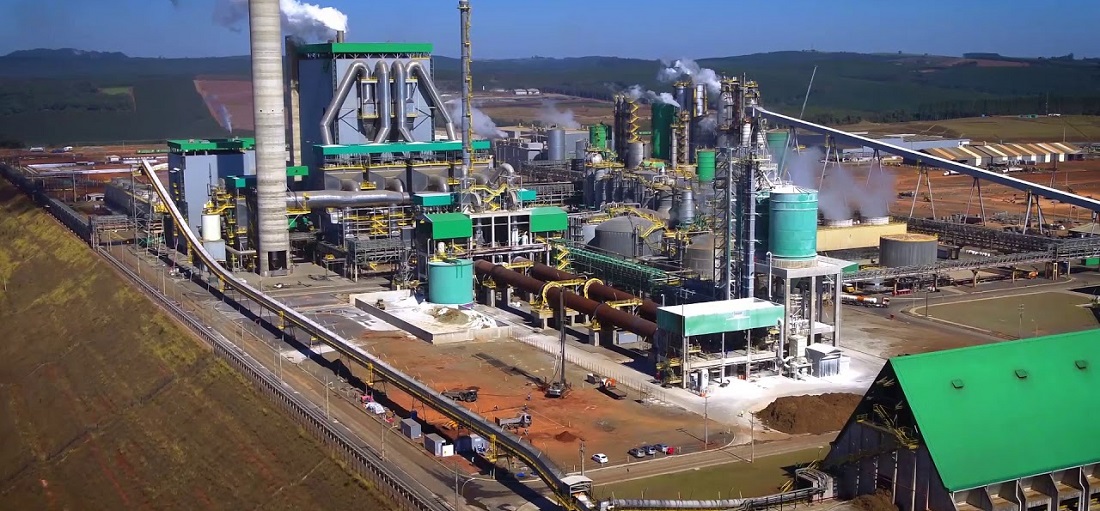
Klabin to turn pulp residue into sulfuric acid
May, 18, 2021 Posted by Ruth HollardWeek 202122
For the Puma II Project, Klabin is building the first sulfuric acid plant integrated with a pulp and paper mill in Brazil, in addition to the new packaging-paper production line in Ortigueira (PR). This plant will make the unit self-sufficient in the production of the chemical compound. Supplied by Andritz, the plant will take advantage of the residual gases from the wood-cooking process and transform them into sulfuric acid, which it will use to produce pulp and paper.
Sulfuric acid is one of the main inputs of a pulp & paper plant. “The construction of a plant like this means intelligently taking advantage of the by-products generated along the production chain in economically usable and ecologically sustainable products, adding value to our production,” explained Klabin’s Recovery and Utilities project manager, Walter Oliveira.
Sulfuric acid is used in several parts of the production process, such as in the Drying Machines, in the Tall Oil plant, and in the Fiber Lines, among others. This new technology aligns with the sustainability that Klabin seeks to implement in all phases of the process through environmentally responsible technologies. It also enables cost reductions by producing the sulfuric acid instead of having to rely on purchases of the input. “The Puma Unit and the Puma II Project, from the beginning of their studies, were designed with technologies capable of increasing the factories’ self-sufficiency. This is good for the environment, which is one of the company’s premises, in addition to contributing to the United Nations’ Sustainable Development Goals (SDGs),” comments João Braga, General Manager of the Puma II Project.
-
Other Cargo
Dec, 05, 2022
0
China demand may spur Brazil bean, pea exports
-
Oct, 04, 2023
0
Pecém Port eyes electrolyzers to produce green hydrogen
-
Grains
Jan, 31, 2025
0
China reduces soybean purchases from the U.S., despite delays in Brazil
-
Other Cargo
Nov, 01, 2022
0
Brazil exports of footwear components reach USD 331.9 million

